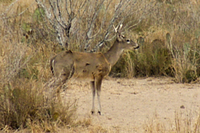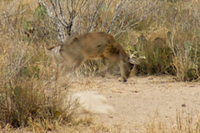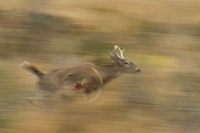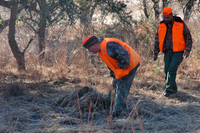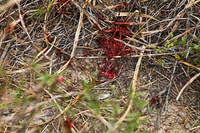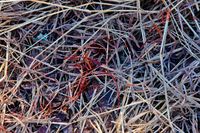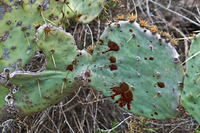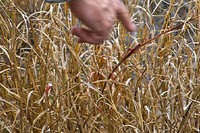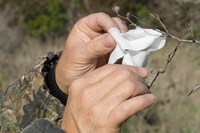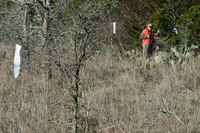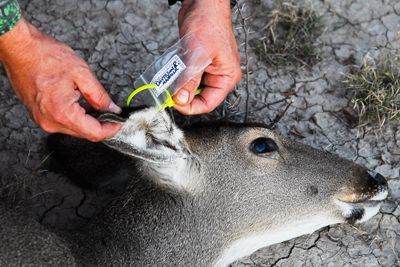After the Shot

After the Shot
What you do after the shot can be just as critical to the success of your hunt as everything you have done before taking the shot. Retrieving your game, properly tagging if necessary, cleaning, transporting, processing and storage are all equally important components of the hunt.
Mark
Before the shot is made, mark in your mind the exact location of animal. Notice any landmarks that will aid you to find that exact spot. If the animal runs off this will help you begin trailing. It is easy to become so focused on the quarry that you lose perspective of its location after the shot. Above there is a stump to the right of the buck, a distinctive tree to the left and a row of cactus behind.
Watch and Listen
Above is the classic broadside shot. A typical reaction by a deer to such a heart-lung shot is to jump or lurch straight up, then sprint off, usually in the direction they were facing when hit. Many times you can hear when the bullet strikes. Right after the report of the rifle, there will be an audible, “Thwack.” Also listen as the deer moves off into the brush. You may hear branches breaking and the body crashing into brush, giving you clues for directions to search later.
Wait
If the deer has run off, mark the time then wait for at least 30 minutes to an hour before beginning to trail. After incurring a mortal wound, an animal, after a short run, will usually lie down, go into shock and die. If you move in too quickly, the animal’s flight instinct will kick in. With a flush of adrenaline, that animal can jump up and continue running for several hundred yards. In dense cover, this can make finding and retrieving that animal very difficult, if not impossible. By simply waiting and being patient you will be better able to find the animal.
Trailing Wounded Game
Just because an animal flees after being shot does not mean it is lost. There is a good chance you can recover the animal.
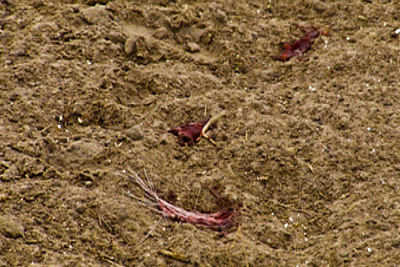
First go the exact spot that you remember where the animal stood when you shot. Look for hair and blood. Depending on the placement of the shot you may even find meat and bone. Even if you think you missed, you should check thoroughly for any sign of impact.
From there, move slowly in the direction the animal fled. Look for more blood on the ground but also look for blood higher off the ground on plants.
Many hunters carry toilet paper in the field with them. It can come in handy to mark the blood trail. Tie a piece above or very near where you find blood sign. After marking several spots the toilet paper “flags” will give you a good idea of the direction of flight. Once the animal is located remove the toilet paper. If you miss one or two, the next rain will probably knock them down and in a short time they will disintegrate. Biodegradable orange tape is also available for use to mark trails.
Approach with Caution
A wounded deer can be dangerous, especially its sharp hooves or antlers. Approach from behind, watch the chest to detect any rise and fall from breathing. Notice the eyes. If the deer is dead usually the eyes will be open, motionless and with a glazed appearance.
Tag immediately
Find the appropriate tag on your license, with a pen fill out the name of the property and the correct county then cut out the day and month. Attach the tag to deer (or turkey) in a secure manner before field dressing, photos, or transporting. If you harvest a white-tailed deer, you must also completely fill out the White-Tailed Deer Log found on the back of your hunting license. When taking photos clean up any blood, place the tongue back in the mouth, and position for good presentation. If firearm is used in the photo, open action and point in a safe direction.
